في ذات الفترة الزمنية، ازدادت إمكانيات الطيور وتطورت مقدرتها الوراثية
ً وحتسن اآلداء اإلنتاجي املوروث – جيال تلو اآلخر – من خالل اختيار وانتخاب
أفضل عشائر اآلباء واألمات من نتاج جدود وعشائر اخلطوط النقية املؤصلة.
بطبيعة احلال، ت ّزود عمالء لوهمان بهذا
التطور املتقدم املؤصل من خطوط اجلدود
واألمات واآلباء لالقتناء والتوزيع، وما
ينتقل معها من محتوى املكنون الوراثي
الكامن إلى النتاج من الصيصان متطورة
التأصيل لدجاج البياض التجاري.
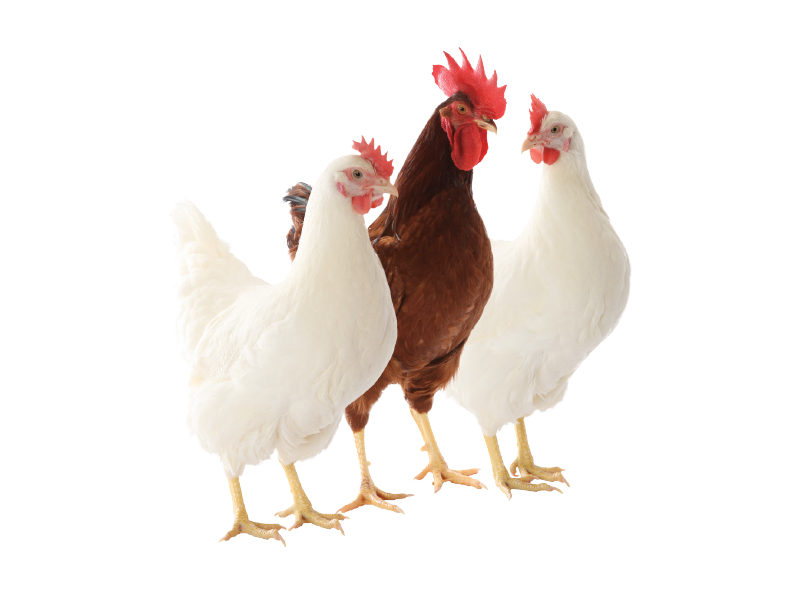
ومبا أننا لم نِر هذا التحديث القائم على بيانات معايير األداء القياسية
– رغم متابعته بدقة ورصده – على كل جيل، فقد تراكم التطور والتقدم
الوراثي والبيئي على مدى األربعة سنوات املنصرمة حتى اآلن.
ً على إجراء التعديالت الالزمة لتحديث بيانات مستويات
لذا، فقد عكفنا مؤخرا
اآلداء القياسية اجلديدة والتي انتهينا منها وأصدرت في منتصف عام 2021.
كانت معايير اآلداء القياسية لسالالت
لوهمان املختلفة تنحصر فقط بإصداراتها
على نظام التسكني باألقفاص حتى عام
ّا، وبعد هذا التاريخ، فلقد
2008 .إن
حل وتزايد وساد اقتناء الطيور بأنظمة
خالية من األقفاص ببعض البلدان، وشاع
بعدها تفضيل إمناء ورعاية الطيور “ضمن
أنظمة اإلسكان البديلة” كنظام قياسي
ُمحبذ لدى معظم املنتجني بدول أوروبا..
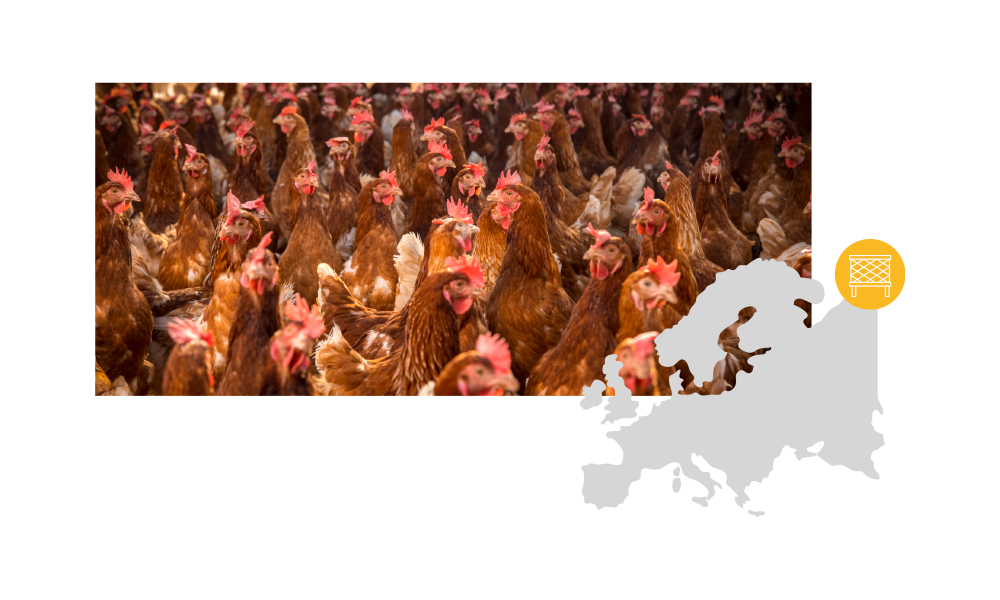
يكن تلخيص التغييرات والتحديثات الرئيسية على كافة املعايير القياسية في اآلتي:
- ازدياد م ّعدل اآلداء اإلنتاجي ومستوى ُتقدمة على أثر وضع البيض باألعمار امل ُ التحسينات املؤصلة جلهة استطالة مدة ُثابرة على استدامة تفوق نسب اإلنتاج وامل القمة لفترة أطول باملرحلة اإلنتاجية.
- امتداد ومد واستطالة معايير اآلداء القياسي بأنظمة التسكني اخلالية من األقفاص حتى ً عن ُّنية )عوضا ُعمر 90 أسبوع للسالالت الب 85 أسبوع(، كما وامتدت واستطالت فترة ُ العمر اإلنتاجي بكافة السالالت األخرى – ُ ُ زركشة – إلى عمر100 أسبوع. البيضاء وام
- ت َّبكر عمر النضج اجلنسي القياسي بأنظمة ً أبكر، ليتقدم الرعاية الطليقة احلرة أسبوعا ُ إلى عمر 19 ُ أسبوع مع معدل إنتاجي قدره %10( ً بدال ُ من عمر 20 أسبوع(.
- تسطح منحنى وزن البيض الناجت: عند ذات ُم ُ عدالت وزن البيض قبل عمر 40 أسبوع، ّ مع حتقيق زيادات طفيفة الحقة بتقد ُ م العمر، من أجل حتقيق ألطول استدامة وأفضل استقرار ُتأخرة. يتعلق بقوة وصالبة القشرة باألعمار ام
- لم ن ُ حدث تغييرات على معدالت وزن اجلسم املستهدف )بعد تلك التعديالت املسجلة في توصيات عام 2018.
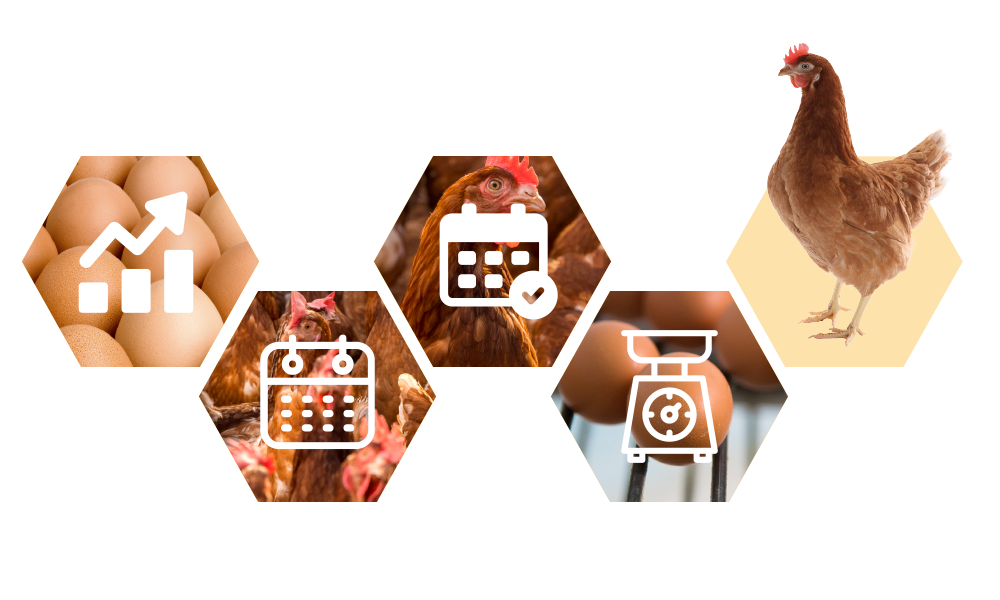
ُثابرة اإلنتاجية التحسينات على مستوى ام
Especially after 60 weeks of age, the laying performance of the hens has improved. This is the consequence of the top-ranking selection target of laying persistency and late shell quality.
The increased number of saleable eggs from a longer production cycle of a flock gives an economic advantage to the egg producer.
The cost for the pullet is distributed to a higher number of eggs and therefore the pullet costs per egg are reduced.

Under field conditions, more and more flocks show a longer production period and therefore the length of the cage free standards have been prolonged to 90 weeks for brown varieties and to 100 weeks for white varieties.
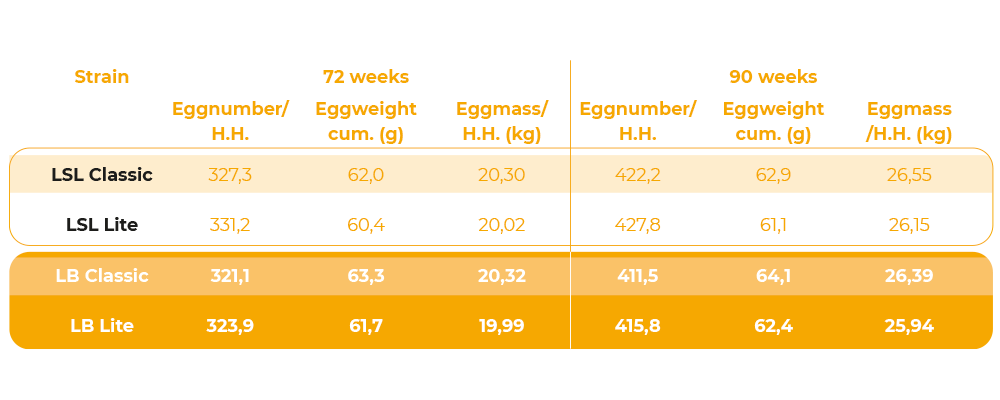
As an example, you can see from the next table the comparison of the old to the new standards for LSL CLASSIC in cage free housing. The egg number at 72 weeks has increased by 6.3 eggs. This increase comes from 2 components: better persistency and the one week earlier start of lay compared to the old standard.
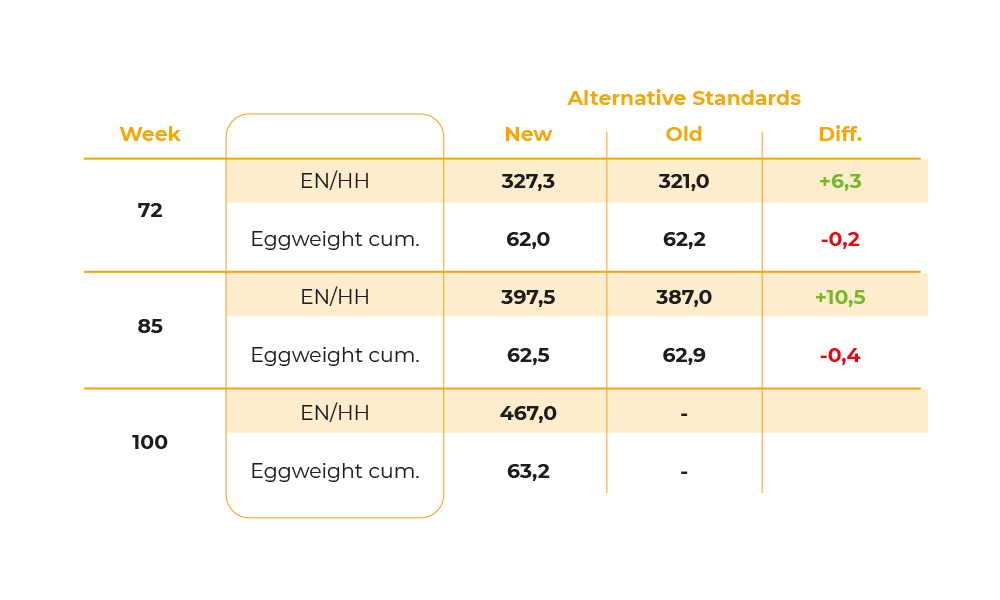
How to read the performance standards
The LOHMANN breed standards for both cages and alternative housing systems are created in a way, that the target values do not correspond to the maximum performance that can be reached. The maximum performance will only be achieved if always perfect conditions for the birds are provided. This is not realistic under “real live” field conditions.
Therefore, our standards are based on average field conditions and should be realistic and reachable under average management- and environmental conditions.
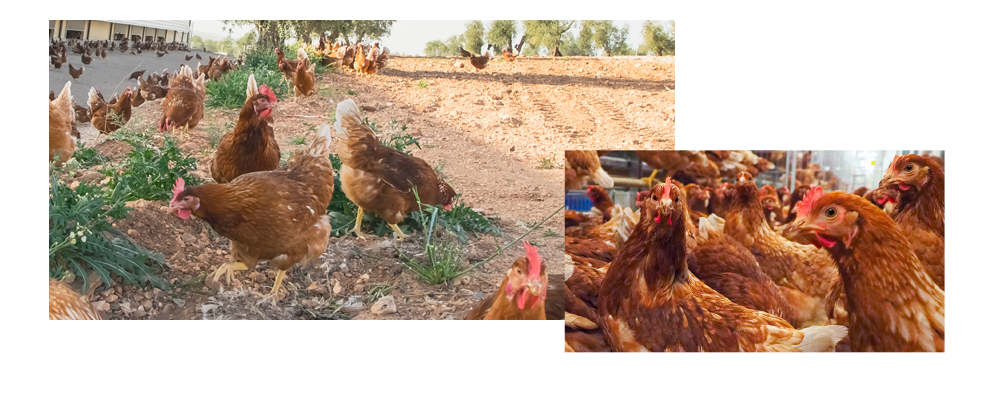
Genetic progress will continue
You can be sure that the genetic work in LOHMANN BREEDERS will continue to create genetic progress.
With investments in new breeding farms (Canada, Spain and Scotland), new technologies (genomic selection), new equipment (Transpondernest in Germany), challenge tests under difficult conditions (Challenge Sibtest in Russia) and continued testing of crossbred birds under field conditions in Russia, Spain and Columbia, the future of genetic progress is safeguarded and sustainable.
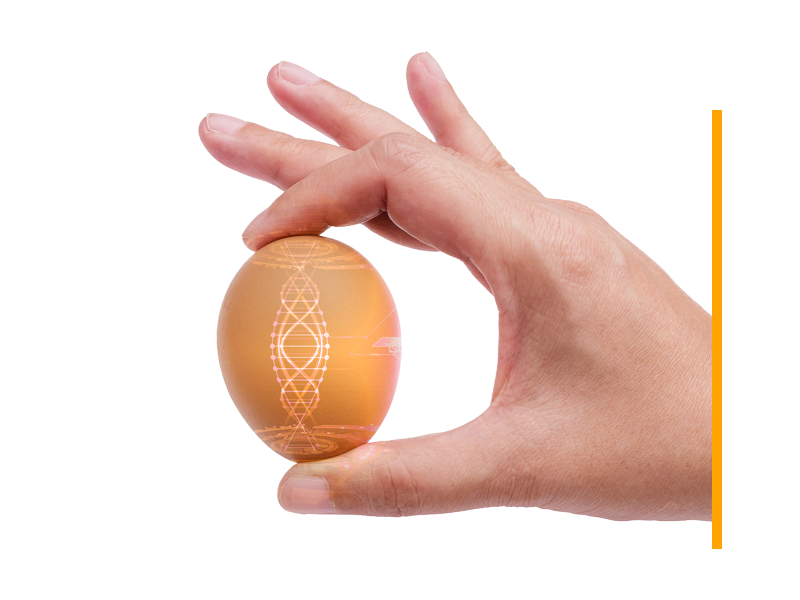
The progress is based not only on economic important traits like laying rate and feed conversion, but also in improved shell quality and livability.
After many generations of intense selection, the genetic parameters (heritability) are still showing a clear potential for further improvement.

Due to a careful management of the level of inbreeding, there are no negative signs, like inbreeding depression or reduced variability.
The biological limit of one egg per day is for sure reached during laying peak in high performing flocks but longer laying sequences still give potential for improved persistency with improved shell quality.
The testing period on the pureline birds was extended to over 100 weeks in one cycle.







